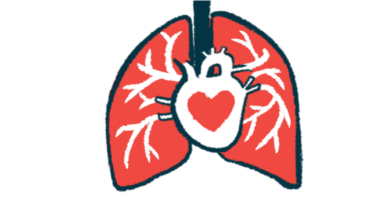AAV Patients at Higher Risk of Stroke, New Study Finds
Results support better monitoring, education in ANCA-associated vasculitis

People with ANCA-associated vasculitis (AAV) are at an increased risk of experiencing cardiovascular problems, such as a stroke, according to a new study done in South Korea.
Indeed, AAV patients were found to have a more than two times higher risk of cardiovascular health problems than individuals without any of this group of autoimmune diseases.
Researchers noted that the study findings support efforts for better monitoring and education about these health events among AAV patients.
“Knowing these risks may enable personalized patient care and improve overall survival,” the team wrote.
The study, “Risk of acute myocardial infarction, stroke, and venous thromboembolism among patients with anti-neutrophil cytoplasmic antibody-associated vasculitis in South Korea: A nationwide population-based study,” was published in the journal Joint Bone Spine.
Need for better monitoring, education
AAV is marked by an hypercoagulable state — an increased tendency to form blood clots — which could theoretically set the stage for cardiovascular health problems, such as stroke or heart attack.
However, studies on the risk of cardiovascular health problems among AAV patients have yielded inconsistent results, and few have specifically examined these outcomes in Asian populations.
To learn more about the risk of stroke and other conditions in this patient population, a team of researchers from across the Republic of Korea turned to data from the country’s national health insurance service.
The team compared the rates of cardiovascular disease in the general population with those seen among 1,905 people with AAV.
These patients had a mean age of about 60 years, and were followed for an average of nearly five years. In terms of disease subtype, 42.5% of patients had microscopic polyangiitis (MPA), 29.1% had granulomatosis with polyangiitis (GPA), and 28.4% had eosinophilic granulomatosis with polyangiitis (EGPA).
In total, 240 AAV patients (12.6%) experienced a cardiovascular health event. The most common was stroke, accounting for 64.6% of the cases.
Acute myocardial infarction, more commonly known as a heart attack, accounted for 5.4% of the cases. Pulmonary embolism and venous thromboembolism (VTE) — conditions in which blood clots disrupt blood flow to the lungs or other organs or tissues — accounted for 18.3% and 34.6% of the cases, respectively.
These events were generally most common among people who were recently diagnosed. They were less frequently reported among patients who had been living with AAV for many years.
This may be reflective of high disease burden at diagnosis and later improvements due to treatment, researchers noted.
In statistical models, the overall risk of cardiovascular events was more than two times higher in AAV patients compared with the general population.
“This nationwide population-based study demonstrated that Korean patients with AAV were at a significantly (2.3 times) higher overall risk for [cardiovascular health problems] than the general population,” the researchers wrote.
“Based on these findings, this study might recommend close monitoring of potentially fatal but preventable [cardiovascular] events in Asian patients with AAV,” they wrote.
The risk of stroke, pulmonary embolism, and VTE was significantly elevated in all AAV subtypes.
While the risk of heart attack was significantly elevated for patients with MPA, this was not the case in the other two disease subtypes. Also of note, the risk of VTE was significantly higher in patients with EGPA compared with the other two subtypes.
Researchers noted this analysis is limited by the reliance on insurance information, which is an imperfect surrogate for clinical data.







